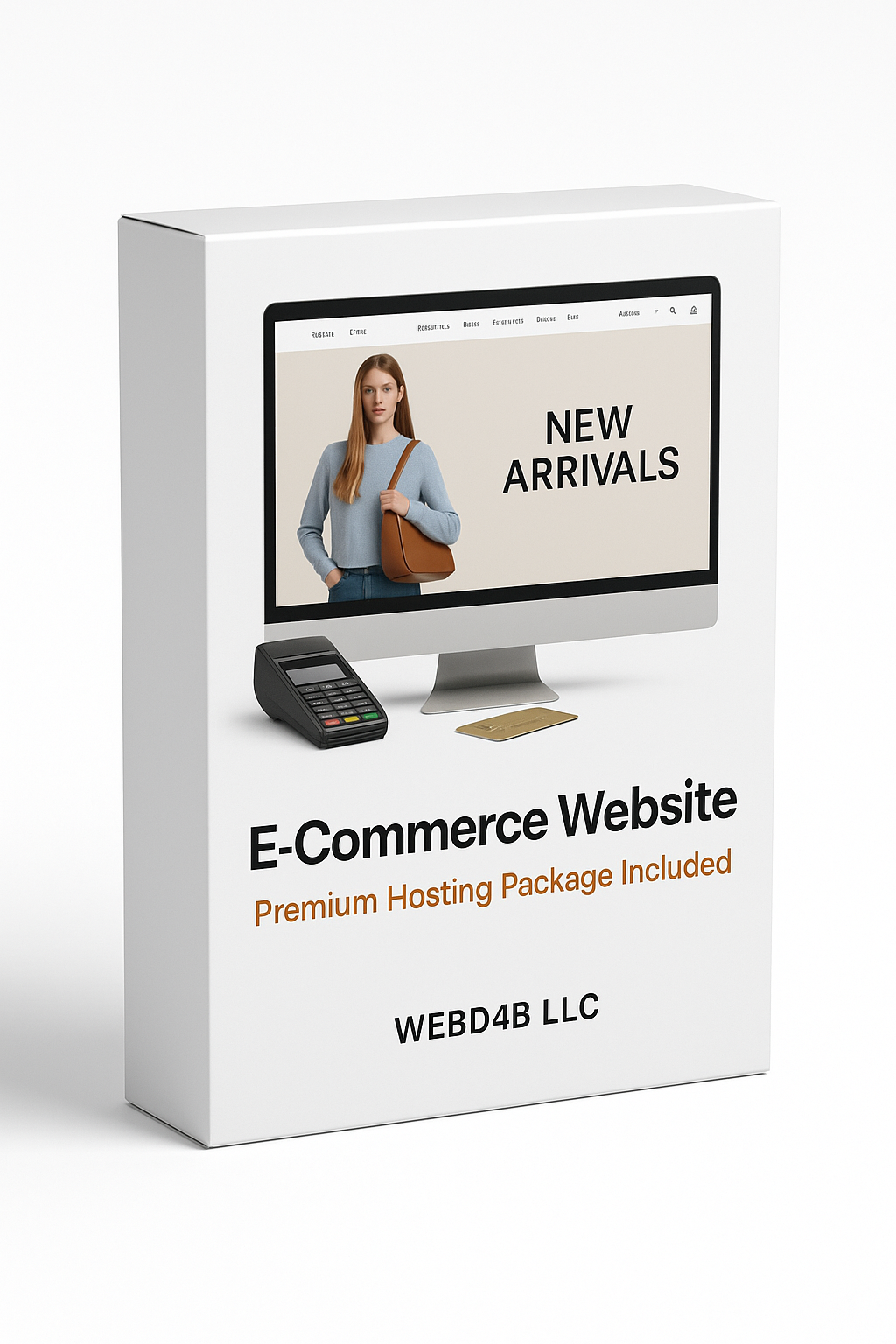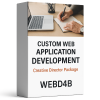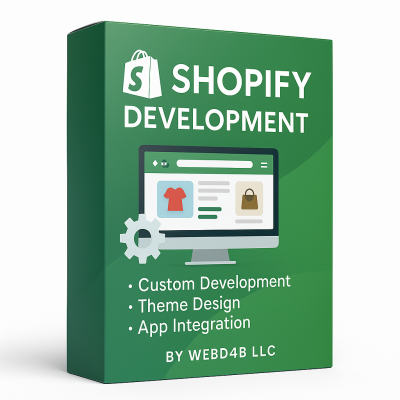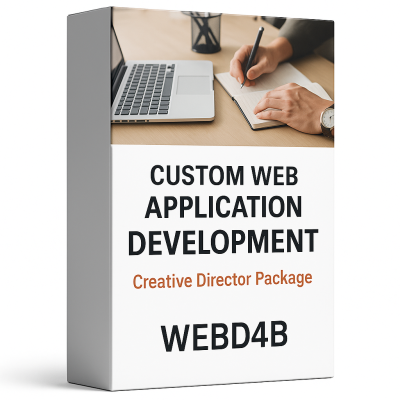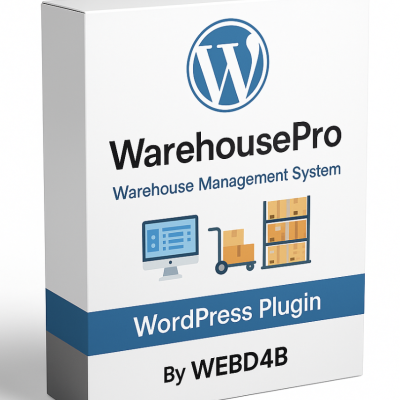E-Commerce Solution **Premium Hosting Package Included**
$150.00 / month
- Full analysis of your business or idea
- Braining storming and weekly/monthly meetings
- Web development and design
- Full E-coomerce platform
- Payment Options
- Inventory feed manager
↓↓What we include in our services↓↓
1) Coming up with the right platform for your e-store
We offer the most-used platform on the internet, WordPress. Unlike many other platform out there you do not have to pay a percentage over each sale. Your monthly fee is relatively the lowest and all of your features are included. Although making a WordPress website requires technical knowledge but that’s why we are here to help you with. WooCommerce is the number one platform in the market and with that we will create an astonishing e-shop for you in no time. You store will have functionalities such as
– Product Inventory Management
– Product feed management for large inventories (excel sheet and csv import)
– Order management, notification management, and shipping notifications
– Payment options (recurring or one time)
– Live chat and contact forms for customer service
– Any other e-commerce related functionality (tax, shipping, quote, etc)
2) Creating static vs dynamic Pages
What exactly is a static website?
A static website is composed out of HTML, CSS, and Javascript websites (all examples of web development languages). A static website stores each page as a single HTML file, which is transmitted straight from the server to the webpage in its entirety. This text effectively becomes a part of your page’s appearance and will not change until the original HTML file is updated at the code level.
Manual changes to a static website can only be made page by page, HTML file by HTML file. For example, changes to a homepage’s HTML file will only be reflected on the homepage. This is true even for parts that are shared by the whole site, such as the footer. When you use a website builder, updates to static pages are performed automatically each time you use the website editor.
One of the most distinguishing features of a static site is that every user receives and displays the same information. As a result, static websites are best suited to sites with fewer pages that do not require regular updates or revisions.
A resume website is an excellent choice for a static site. This is a site with predefined content for each page that does not need frequent modifications to individual pages or real-time updates based on user activity. Personal websites, charitable websites, and solely informative websites are further examples of frequent static website kinds (good examples of these include one page or landing page sites).
Static Website Advantages:
- Increased page loading speed
- Rapid production
- Possibility of increased security
What exactly is a dynamic website?
Dynamic websites, which are built with server-side language and technology, allow the content of each page to be provided and displayed dynamically, or on-the-fly, based on user behavior or user-generated information.
A dynamic website organizes all of your data and content in a database or backend Content Management System (CMS) that links to your website pages. The way this information is organized and linked to the design of your site determines how and when its content appears on a page.
What does it all mean? Dynamic websites, on the other hand, allow you to adapt and customize website content for a single user. It also allows you to make changes to several pages at the same time because changes made to one dynamic page are automatically applied to hundreds more.
Dynamic websites, for example, allow you to select which information is presented to a user based on their location. You may also distribute the material to visitors depending on their current or previous actions on your site (thanks to Cookies), which means that each visitor sees a unique version of the content on a page. A multilingual website is an excellent example of when developing a dynamic website may be beneficial.
Dynamic Website Advantages:
- Simple to update
- Improved user experience
- Increased functionality
3) Website sitemap – UI and UX development – creating website mockup
When building a website, it is paramount that you map out what the website will look like. Which buttons the site will have? How many buttons? Where will those buttons go once the user clicks on them? This phase of website development should be done long before you pay for the platform on which it will stand. Website design begins long before the pen meets paper to create the style and feel.
Whether you are building the website yourself, or you are paying someone to create the website for you, creating a Sitemap will both speed up the website creation process and will give the creator a clear timeline on what has to be done and when.
To create a website that is bound for greatness you have to think about the User Interface ( UI ) and the User Experience ( UX ).
The purpose of UI design is to visually lead the user through the interface of a product. It all comes down to delivering an intuitive experience that doesn’t need the user to think too much!
It takes into account all of a product interface’s visual and interactive features, such as buttons, icons, spacing, typography, color schemes, and responsive design.
When designing the UX you have to consider how the experience makes the user feel, as well as how simple it is for the user to do their intended tasks. They also watch and do task analytics to determine how users finish tasks in a user flow.
For example, how simple is the online checkout process? How well do you hold that veggie peeler? Is it simple to handle your money using your online banking app?
The ultimate goal of UX design is to produce simple, efficient, relevant, and enjoyable user experiences.
An important part of website development is creating a Website Mockup.
A website mockup is a static visual depiction of how a web page, website, or online application would seem when completed. A mockup is intended to seem like the finished product, but it is not yet functioning, so you cannot interact with it.
You can think of a Sitemap as the skeleton and UI and UX as the muscles. Using that comparison a website mockup would be the outer layer of the body the skin, the hair, everything on the outside – what the user sees. It will not have any functionality, but it gives the developer a clear view of what the website looks like. In this phase of website development, you can easily determine whether you like what you see and whether you want to make changes accordingly.
4) How to secure your website
With the world we live in becoming more and more digitized, it is critical to be protected online. The same thing goes for your website. As your website grows, and it has more and more traffic, it becomes exponentially more vulnerable to malicious cyber attacks.
As the number of websites worldwide grows—to a record 1.86 billion in the first half of 2021 alone—so does the number of cyber assaults. Website attacks in the United States have surged about 400% since 2020.
Website security is the protection of your site against malevolent internet attackers who can access, change, and steal the information and data on your site. It should also secure your site’s visitors’ personal information and privacy.
The most common things you can do to boost security on your website are:
- Choosing the right platform for your website
- Include SSL protocols
- Pick a secure web hosting
- Select a safe web hosting service
- Monitored administrative capabilities
- Use best password procedures
5) Error catching – website testing with dedicated test groups
As with any type of development, you cannot build something that is worth building without tripping and falling a few times. Mistakes and errors are common in web development and they usually present no problems if you discover them early and rectify them as soon as possible.
If you detect errors or handle them improperly, your website is automatically at risk.
Improper error handling can cause a range of security issues for a website. The most typical issue is when the user sees comprehensive internal error messages such as stack traces, database dumps, and error codes (hacker). These messages expose implementation information that should not be made public.
Once your website is nearly finished, you as the developer would like to know how the user will interact with your website. While you might think that the website is perfect and clear, you could find the user is struggling to navigate through the website.
Such feedback is priceless because it gives you the perspective of the people that will be visiting and using the website you have created. If they cannot use it, then it doesn’t matter how perfect you think it is.
As Bill Gates famously said, “Your most unhappy customers are your greatest source of learning.”
The happy customer will not give you something to work with. You cannot improve a website if everyone is happy with it. It is only when you get someone that is not happy with the experience, and you listen carefully to what they are saying, will you be able to improve your website.
Optional add-ons:
6) Continuing customer support for future updates
Customer Support started out as a small part of a company that has the task of dealing with unhappy customers and solving queries. Today, however, Customer Support is a whole company. It is simply the future. As technology grows rapidly, and it changes quickly, it can sometimes be difficult to keep up.
As your website grows, it will start evolving into something much more than it previously was. As more and more people start interacting with your website, you will find increased communication towards you. If you are an eCommerce business website, you might have customers complaining about logistics. If you have a blog, you might have customers requesting certain topics to be covered.
Along with website content, you will want to evolve the website to keep up with the events that surround the niche the website is about.
For any big change or update, or upgrade that you might want to implement to the website, customer support will be there to aid you.
7) Website SEO – marketing – ads – website traffic
Traffic is what determines how successful a website is. Traffic is the people that visit your website on a daily basis. Both repeating customers, and new.
There are two types of traffic when it comes to a website – Organic Traffic and Paid Traffic
What is organic traffic?
Organic traffic is the users that will find your website by entering specific keywords or phrases. For instance. Your website might be for selling golf clubs. If a user types “best golf clubs” into Google, there is a chance that your website will pop up to the user.
SEO, or Search Engine Optimization is a process where you as the website owner follow different practices and tasks to make sure your website ranks high on a search engine ( such as Google, Bing, etc. ). By optimizing your website for search engines you are essentially giving your website free traffic that grows naturally.
Another way you can get free traffic, or organic traffic is using social media. By posting content on various popular social media platforms you have a chance to redirect some of those millions of visitors toward your site. And more traffic is, as we have previously mentioned, critical for the success of your website.
What is paid traffic?
Paid traffic is ads. It is that simple. They come in many shapes and forms. From pictures, videos, sponsored content, and many more. What they all have in common is – you must pay for them. In return, you get some traffic directed towards your website.
Sounds expensive? Well, usually it is, and unless you are experienced and know what you are doing you might find yourself burning much more money than what is being returned to you through website sales or monetization.
8) Video product and animation
Using video content for your website is one of the fastest-growing ways of reaching your audience.
There is no one way of creating a video that will attract the right audience.
Think of a painting. It is an art piece that some will look at and pass by, others will not even notice it. Some of those that notice it will stop walking and look at it. And from that few people that stand and look, some will like it, while others won’t. And there is no recipe that will make everyone stop and admire that painting.
The only thing you can do is create some creative content that follows some tied and tested guidelines:
- Say what you want to say
- Keep it short (15-30 seconds)
- A human is your audience
It is always important to know why you are creating that video. What message do you want to convey to your desired audience? Once you know what the message of the video is, you can start shaping it. Giving it a start and a finish is equally important.
The world we live in today is very fast, and it is getting faster. You have less than 3 seconds to capture a user’s attention, and if you manage to do that, then you must have content that will keep the user engaged and entertained in some way. Otherwise, they are gone.
If the video drags on for too long, the chance of a person sticking through it all greatly diminishes, and if the message you are trying to say is not said earlier, you might have lost yourself a good portion of viewers that would have responded positively otherwise.
And the most important, and perhaps most obvious thing to keep in mind is that you are trying to talk to a human being. And there are too many people on the planet for all of us to be the same. Different people require different things to give back a positive response. The one you might be looking for. And it is tricky to know exactly what to say or how to say it sometimes.
The most important thing is to test out different things and see how people respond. And then collect all that data and create a better product based on those findings.
→BEST TO CHAT OR CALL BEFORE PLACING AN ORDER
| Size |
|---|
Related products
Web Development
Web Development
Web Development
Custom Web Application Development **Creative Director Package**
Web Development
Web Development
Web Development
Web Development
Web Development

